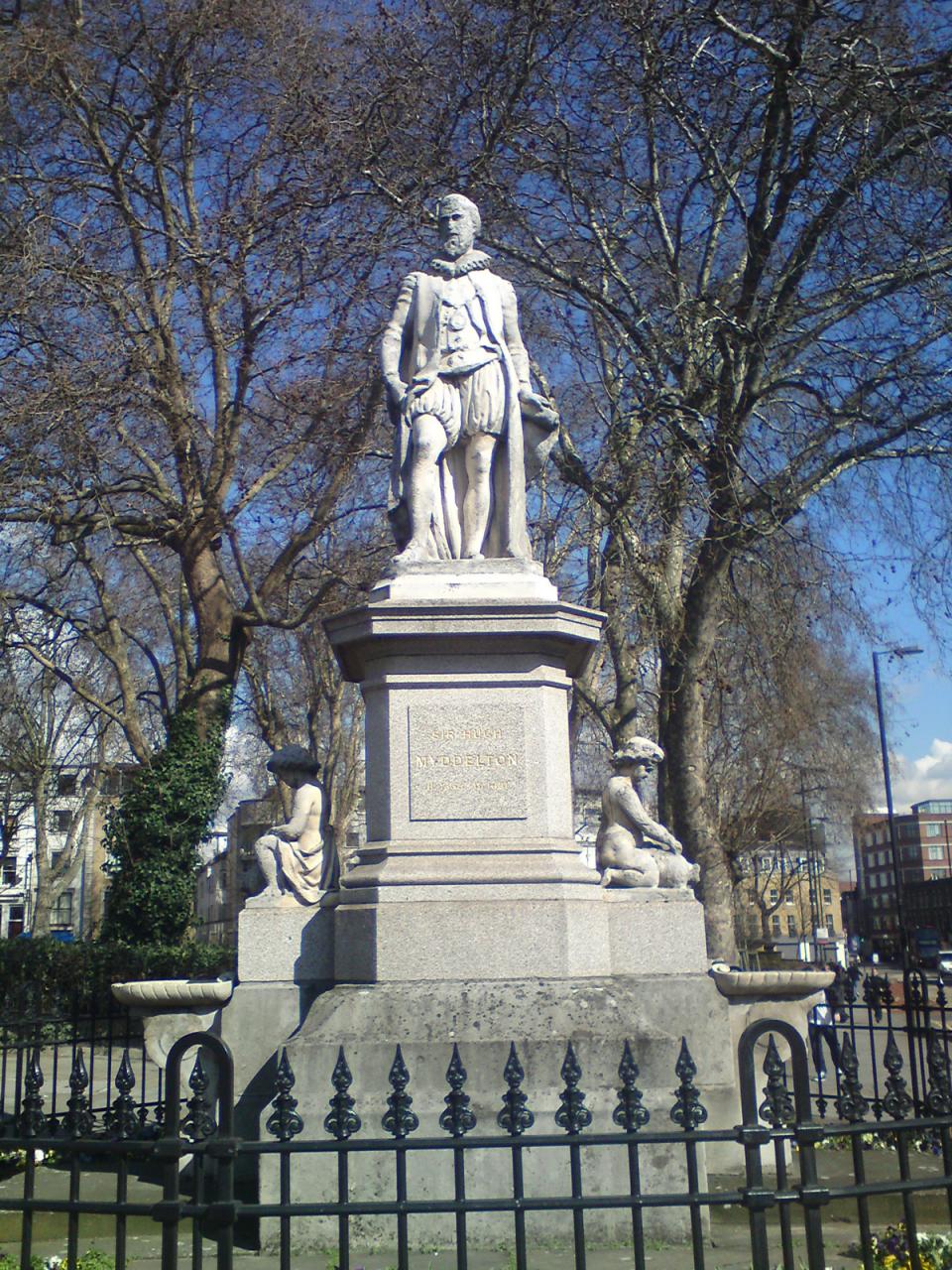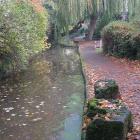London’s New River is neither new nor a river. Constructed in 1613, it was an artificial waterway to bring fresh water from springs in Hertfordshire to the New River Head, a reservoir in Islington, from which the water was distributed throughout London. As a result of London’s expansion around this time, many of its historical sources of water, such as local springs and the public conduits, became insufficient in providing for the increasing population’s needs. While plans to bring in water from London’s hinterland had been voiced since the late Middle Ages, the expenses attached to such an undertaking prevented them from actually materializing. The main issue was that a huge capital input would be required before any money could be made, and the city was reluctant to make this investment.

The New River at Islington Park
The New River at Islington Park
2009 Nick Sarebi
Click here to view Flickr source.
 This work is licensed under a Creative Commons Attribution-NonCommercial-ShareAlike 3.0 Unported License.
This work is licensed under a Creative Commons Attribution-NonCommercial-ShareAlike 3.0 Unported License.

Statue of Hugh Myddleton at Islington Green
Statue of Hugh Myddleton at Islington Green
Photo by Carry van Lieshout
Click here to view Wikimedia source.
 This work is licensed under a Creative Commons Attribution-NonCommercial-ShareAlike 3.0 Unported License.
This work is licensed under a Creative Commons Attribution-NonCommercial-ShareAlike 3.0 Unported License.
It took a goldsmith and entrepreneur named Hugh Myddleton to get the project going in the early seventeenth century. Myddleton set up the New River Company, issued shares to fund the construction of the canal, and received permission to sell the water. While this company was not the first to offer Londoners a commercial water supply, as London Bridge Waterworks had been running since 1582, over the next few centuries the New River Company grew to be the largest water supplier both geographically as well as in terms of revenue, and inspired the establishment of similar ventures. Its expansion over time mirrored the increasing part of London’s population that was commercially supplied with water. As such, it played an instrumental part in the shift from freely available water that had to be fetched to a commercial service that was laid into people’s homes.

New River memorial to Sir Hugh Myddelton at Amwell Spring
New River memorial to Sir Hugh Myddelton at Amwell Spring
2010 Rob Candlish
Click here to view Geograph source.
 This work is licensed under a Creative Commons Attribution-NonCommercial-ShareAlike 3.0 Unported License.
This work is licensed under a Creative Commons Attribution-NonCommercial-ShareAlike 3.0 Unported License.
Today most of the New River is still an open watercourse from its source until it reaches the water reservoirs at Stoke Newington, where its water joins north London’s water supply, and it still accounts for 8 percent of the water supplied. The entire length of the old waterway can be walked by following the New River Path, which was created in the 1990s. This path follows the open canal until Stoke Newington, after which it follows its underground course to the New River Head. The importance of the New River to the history of London’s water supply is reflected in several street names in this area, which commemorate the canal and its founder, as well as a statue of Hugh Myddleton at Islington Green nearby.
How to cite
van Lieshout, Carry. “London’s New River.” Environment & Society Portal, Arcadia (2012), no. 2. Rachel Carson Center for Environment and Society. https://doi.org/10.5282/rcc/3683.
ISSN 2199-3408
Environment & Society Portal, Arcadia
 This work is licensed under a Creative Commons Attribution-NonCommercial-ShareAlike 3.0 Unported License.
This work is licensed under a Creative Commons Attribution-NonCommercial-ShareAlike 3.0 Unported License.
2012 Carry van Lieshout
This refers only to the text and does not include any image rights.
Please click on the images to view their individual rights status.
- Dickinson, H. W. Water supply of Greater London. London: The Courier Press, 1954.
- Rudden, B. The New River: a legal history. Oxford: Clarendon Press, 1985.
- Tynan, Nicola. “London's Private Water Supply, 1582–1902.” In Reinventing Water and Wastewater Systems: Global Lessons for Improving Water Management, edited by P. Seidenstat, D. Haarmeyer, and S. Hakim, 341–60. New York: Wiley, 2002.
- Ward, R. London’s New River. London: Historical Publications, 2003.








